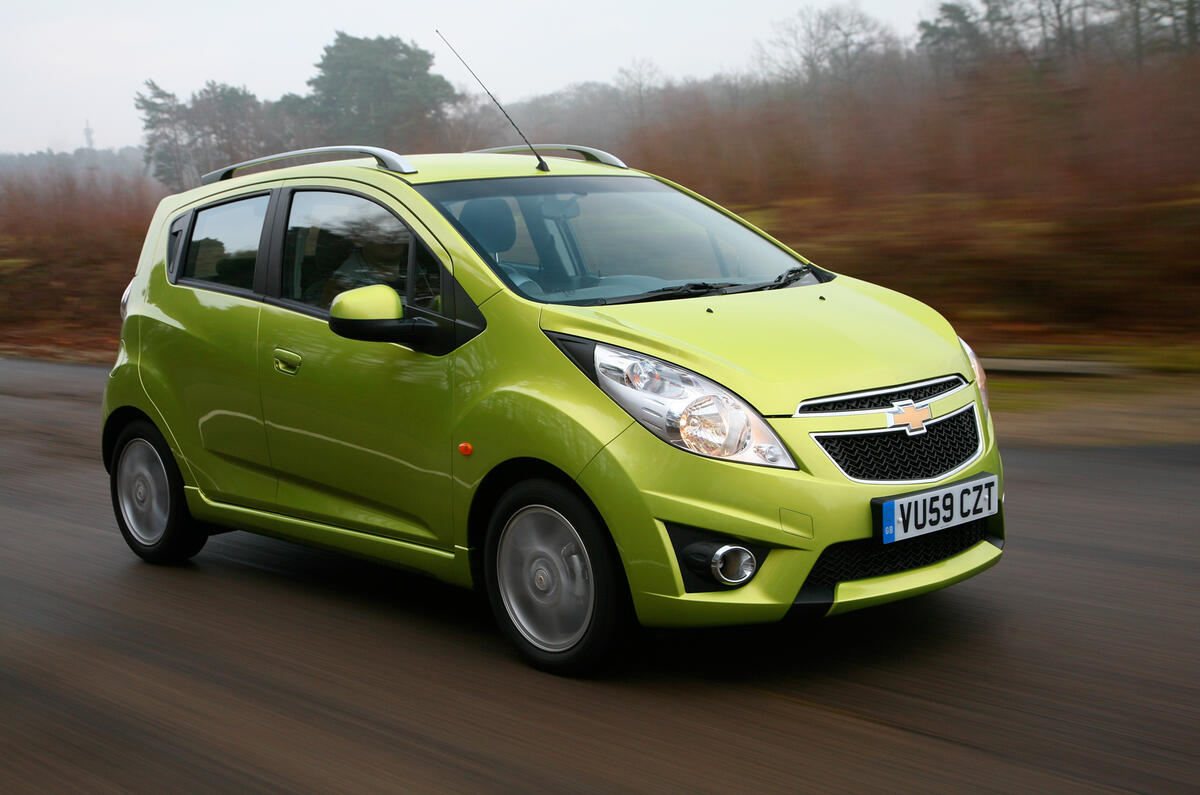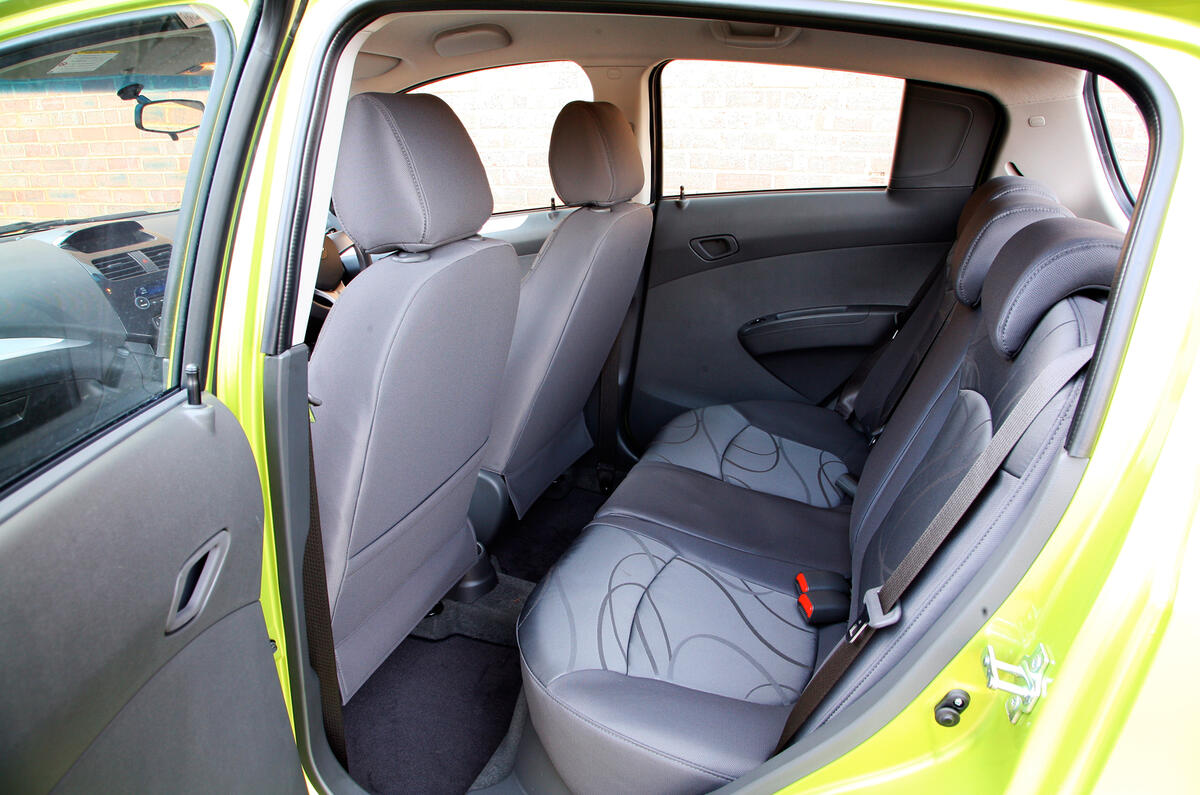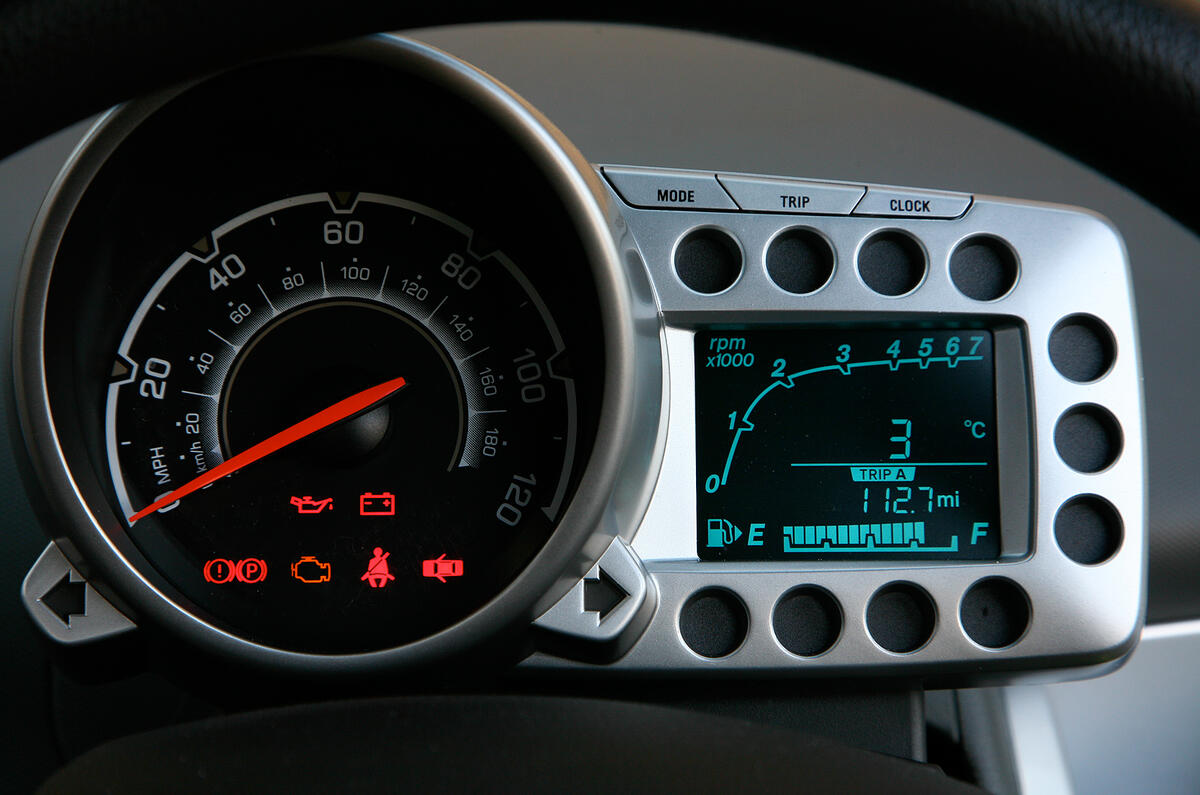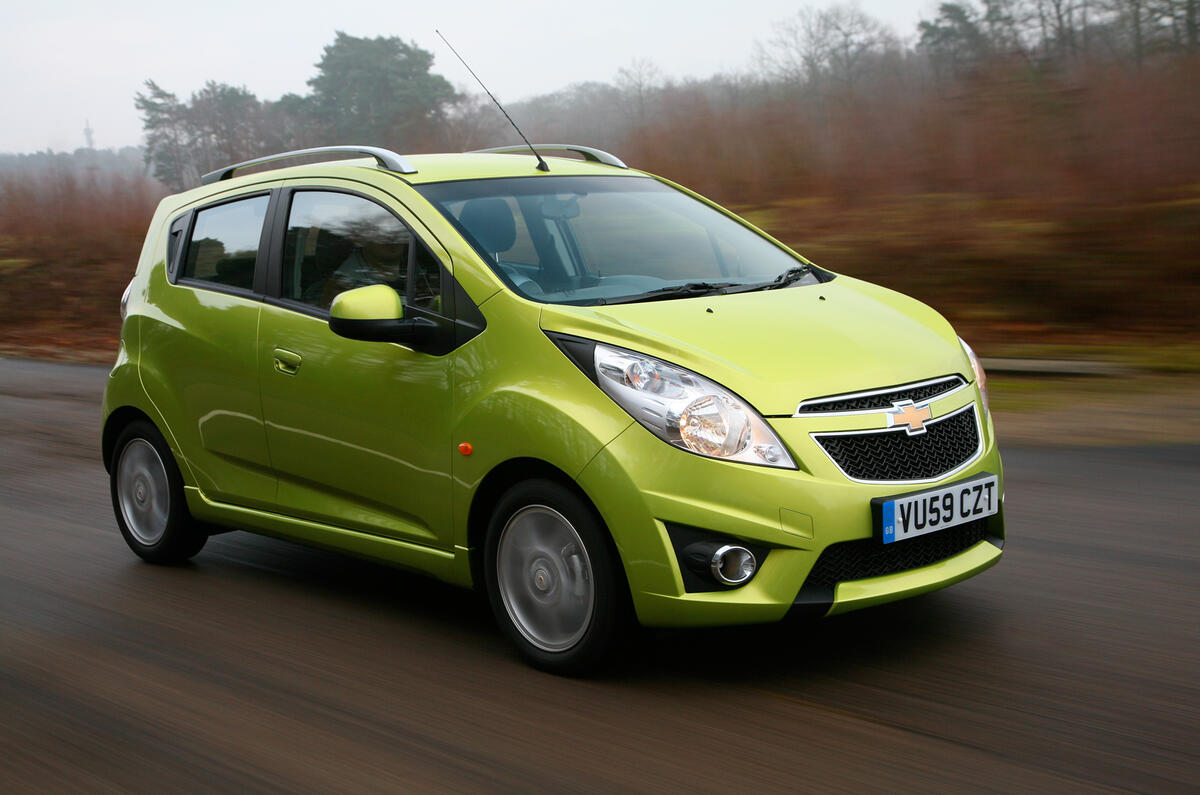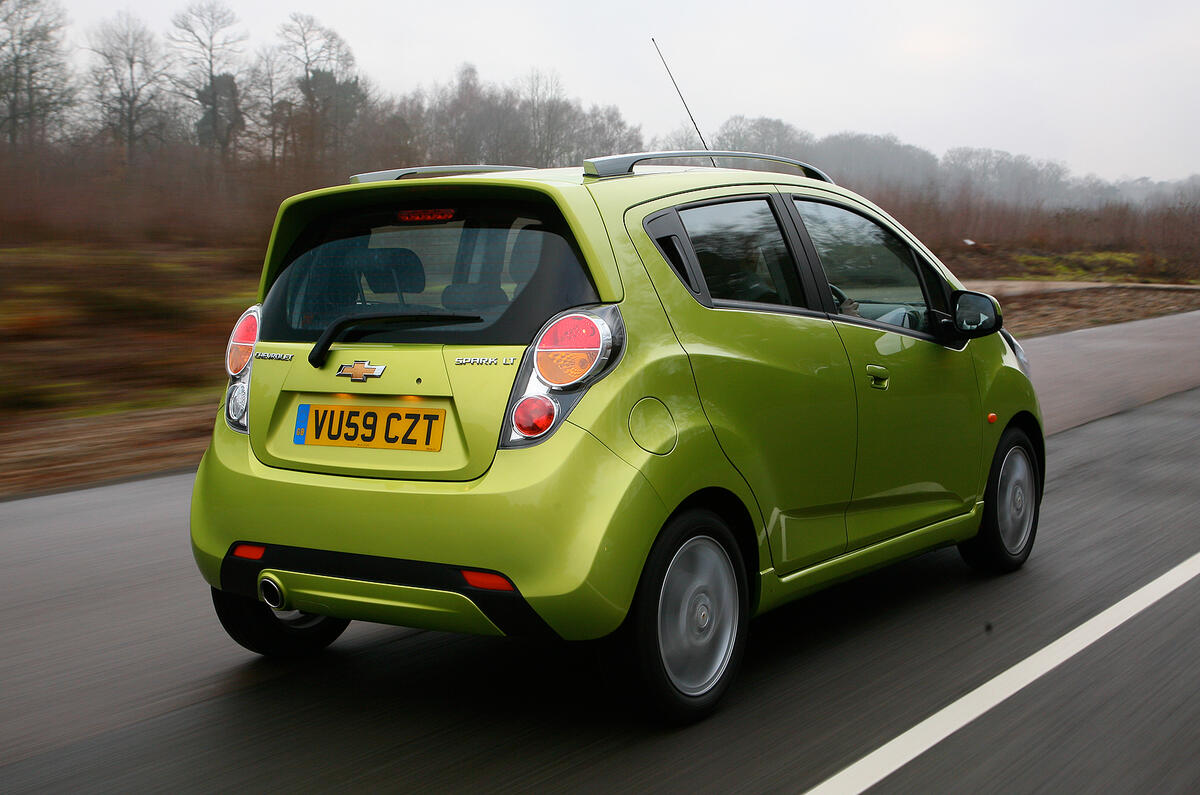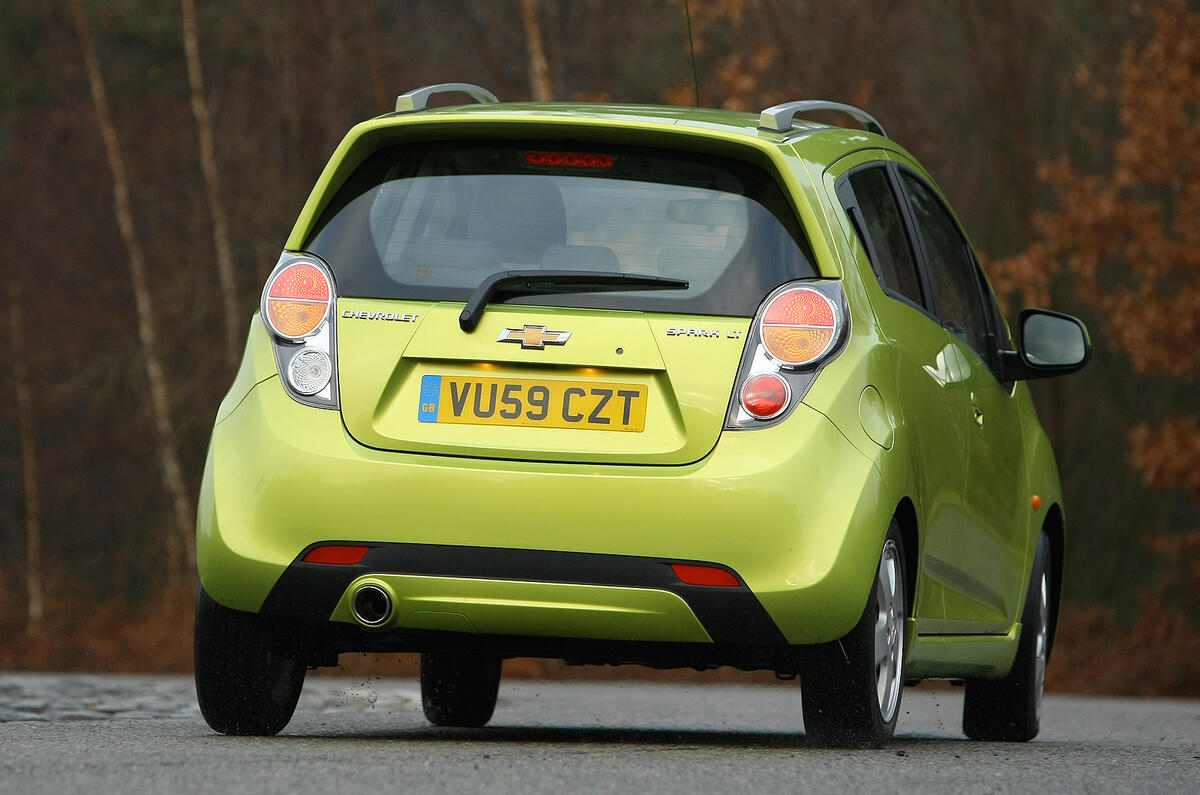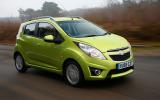The most obvious benefit of the Chevrolet Spark being such a large city car is that it offers a surprising amount of interior room. Front seat occupants will want for neither leg nor head room, while rear seat passengers are also served well. There is even ostensibly space for three back there but, because the Spark is not a great deal wider than most city cars, it is a squeeze for three abreast. The passenger compartment is where most of the room has gone, though, because while the boot’s 170-litre volume (with rear seats in place) is decent enough and comfortably exceeds what you’d fit in a Toyota Aygo, the Hyundai i10 manages 225 litres.
The Spark’s comparatively lengthy wheelbase and high roofline do at least mean it can swallow 568 litres with the rear seats folded, and here access and shape are more important than outright capacity. The Hyundai i10’s rear hatch offers easier access but the two are broadly comparable.
Where the Spark stands out from nearly all of its competitors is in the extrovert design of its interior, with a prominent and neatly designed centre stack, bold sweeps either side and what is supposed to be a sports motorcycle-inspired instrument binnacle behind the pleasingly shaped steering wheel. Were the materials used for this not akin to those you’d have found on a shop’s own-brand stereo of the mid-1980s, this would be more successful.
Elsewhere, material choice is acceptable, but what is not are some peculiar ergonomic decisions. There is no external boot handle (the key must be used) and the rear foglight is operated by rotating the end of the windscreen wiper stalk. Conversely, the optional front fogs are operated via an additional rotary switch on the indicator/headlight stalk.



